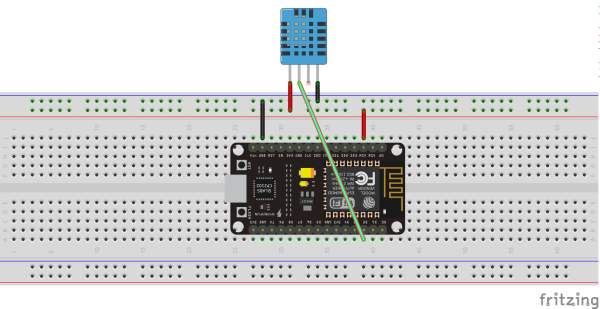meta data de esta página
Enviar mensajes desde el ESP8266 mediante Telegram
Lo primero que necesitamos en crear nuestro propio bot. Para ello instalamos Telegram en nuestro móvil e iniciamos un chat con @BotFather.
- Escribimos /newbot y nos saldrá un mensaje preguntándonos el nombre que le vamos a poner a nuestro bot
- Una vez escrito el nombre de nuestro bot y al pulsar enviar seguidamente nos preguntará un nombre de usuario.
- Ponemos un nombre de usuario que debe de terminar con bot
- Ahora nos saldrá un mensaje en el que nos dará una dirección y un token de acceso
- Iniciamos un chat con nuestro bot
- Si escribimos algo y enviamos el bot nos responde con lo mismo
Una vez que hemos escrito algo en nuestro chat con el bot procederemos a ver como podemos conocer el identificador (chat_id) ya que lo vamos a necesitar posteriormente . Para ello abrimos nuestro navegador y escribimos lo siguiente :
https://api.telegram.org/bot<token>/getUpdates?offset=0
donde token es el identificador que nos había enviado el @bootFather.
Un ejemplo sería :
https://api.telegram.org/bot266211256:ABE1X7V2MJSxOVB-iK_a_4dXi6f0Uf405hj/getUpdates?offset=0
y en el navegador aparecería un resultado como el siguiente:
{"ok":true,"result":[{"update_id":546293813,
"message":{"message_id":29,"from":{"id":546293813,"first_name":"Intrusos"},"chat":{"id":204236614,"first_name":"Intrusos","type":"private"},"date":1473372888,"text":"Hola"}}]}
donde podemos observar que el chat_id es →204236614
Una vez creado nuestro bot vamos a utilizar el mismo circuito que utilizamos para el servidor web, pero ahora haremos que nos envié la temperatura y la humedad cuando se lo pidamos mediante telegram
/* Código original de https: //github.com/gusman126/arduino_telegram_bot
Modificado por wiki.intrusos.info
*/
#include <WiFiClientSecure.h>
#include <ESP8266WiFi.h>
#include "DHT.h"
// Definimos los parámetros de conexión a la WIFI
const char *ssid = "intrusos"; // no superior a 32 caracteres
const char *pass = "xxxxxxxxxx"; // contraseña wifi
int status = WL_IDLE_STATUS;
// Datos del Bot de Telegram
String BOTtoken = "bot2xxxxxxxx:xxxxxxxxxxxxxxxxxxxxxxxxxxxxxxxxxxx"; //token Ojo hay que porner bot y seguido el token
String Chat_id = "xxxxxxxxx"; // Chat_id
String Texto_enviar = "";
String Texto_recibido = "";
String Update_id = "";
String anterior_upd = "";
String Nueva_upd = "";
String Respuesta = "";
// Variables del codigo de tiempo
int Inicio;
int Termino;
int Intervalo = 15000;
unsigned long elapsed = 0;
unsigned long previous;
boolean respondio = false;
// Pin del ESP8266 al que está conectado.
// El GPIO 4 corresponde al D2 del ESP8266-12E NodeMCU v3
#define DHTPIN 4
// tipo de sensor DHT
#define DHTTYPE DHT11 // DHT 11
// Inicializa el sensor
DHT dht(DHTPIN, DHTTYPE);
WiFiClientSecure client; // inicio del cliente seguro
IPAddress server(149, 154, 167, 200); // IP de api.telegram.org
void setup() {
Serial.begin(115200);
// Conecta a la WIFI
WiFi.begin(ssid, pass);
/// }
while (WiFi.status() != WL_CONNECTED) {
delay(500);
Serial.print(".");
}
Serial.println("");
Serial.println("Conectado a la red WiFi");
Serial.println("Dirección IP: ");
Serial.println(WiFi.localIP());
// Comprobamos la conexion a Telegram
if (client.connect(server, 443)) {
Serial.println(".... conectado a Telegram");
}
// y enviamos el texto de inicio
Enviar_texto(" Inicio del Sistema .......");
// Comprobamos el ultimo mensaje
Ultimo_msg();
previous = millis();
}
void loop() {
elapse();
Leer_msg(); // leemos el ultimo mensaje
// Comprobamos que haya pasado xx seg desde la ultima vez
if (elapsed > 500) {
anterior_upd = Update_id; // Guardamos la anterior Update
Ultimo_msg (); // comprobamos el ultimo mensaje
delay(1000); // Esperamos a recibir los datos
Leer_msg(); // Leemos los datos
busca_upd_id(Respuesta); // buscamos la Update_id y la guardamos
busca_texto(Respuesta); // Buscamos el Texto del mensaje
// Si ha cambiado la Update_id seguimos con el codigo
if (anterior_upd != Nueva_upd) {
//Serial.println("Es diferente Update");
Responder_mensaje(Texto_recibido);
} else {
} // No hacemos nada si es el mismo Upd_id
}
} // Fin Loop
// Orden para buscar el texto del mensaje
void busca_texto( String Rsp ) {
Texto_recibido = "";
int start = Rsp.indexOf("text") + 7 ; // Buscamos el indice ( numero ) de la palabra "text" y le añadimos 7
int fin = Rsp.indexOf("}}]}") - 1; // Buscamos el indice del texto }}]} y le restamos uno
Texto_recibido = (Rsp.substring(start, fin)); // Guardamos el resultado en la variable
}
//Orden para buscar la Update_id
void busca_upd_id( String Rsp ) {
anterior_upd = Update_id; // Guardamos la anterior Update_id para comprobar
int start = Rsp.indexOf("update_id") + 11 ; // Buscamos el indice del texto y le añadimos 11
int fin = Rsp.indexOf("message") - 2; // Buscamos el indice del texto y le restamos 2
Update_id = Rsp.substring(start, fin); // Guardamos la Update_id
Nueva_upd = Rsp.substring(start, fin); // Volvemos a guardar la Update_id pero en la variable de nueva
}
// Orden para pedir el ultimo mensaje, vemos que se usa el Offset=-1&limit=1 para mostrar solo el ultimo
void Ultimo_msg () {
if (client.connect(server, 443)) {
// client.println("GET /botxxxx/getUpdates?offset=-1&limit=1");
client.println("GET /" + BOTtoken + "/getUpdates?offset=-1&limit=1");
}
previous = millis(); // Guardamos los milisegundos para comprobar que haya pasado X tiempo entre lecturas
}
//Leemos el mensaje completo y lo añadimos a una variable caracter por caracter
void Leer_msg () {
Respuesta = ""; // Vaciamos la variable
while (client.available()) { // Mientras no lo lea todo seguira leyendo
char inChar = client.read(); // Lee el caracter
Respuesta += inChar; // Añadimos caracter a caracter el mensaje
}
}
//Orden para comprobar el tiempo entre lecturas
void elapse() {
elapsed = millis() - previous;
}
//Orden para enviar cualquier texto a Telegram
void Enviar_texto( String Texto_enviar ) {
if (client.connect(server, 443)) {
client.println("GET /" + BOTtoken + "/sendMessage?chat_id=" + Chat_id + "&text=" + Texto_enviar + "");
}
}
//Aqui añadiremos las ordenes de respuesta del arduino
void Responder_mensaje ( String mensaje ) {
if (mensaje == "Estado") {
Enviar_texto("Conectado");
respondio = true;
}
else if (mensaje == "Temperatura") {
float t = dht.readTemperature(); // Obtiene la Temperatura en Celsius
Enviar_texto(String(t) + "ºC");
respondio = true;
}
else if (mensaje == "Humedad") {
float h = dht.readHumidity(); // Obtiene la Humedad
Enviar_texto(String(h) + "%");
respondio = true;
}
if (respondio == true) { // mostramos el texto que se ha entendio
Serial.println("El Texto : " + mensaje + " Lo he entendio perfectamente");
}
else {
Serial.println("El Texto : " + mensaje + " No Lo he entendio");
}
respondio = false ; // Dejamos en falso que entendio el mensaje
}
////////// Fin del codigo


